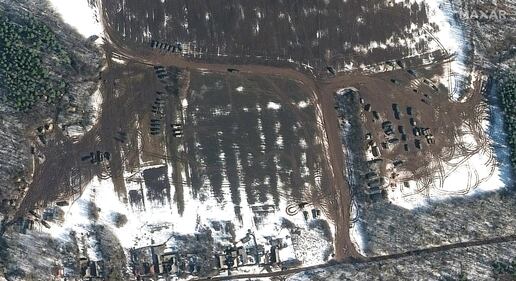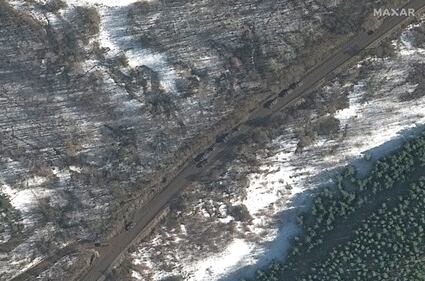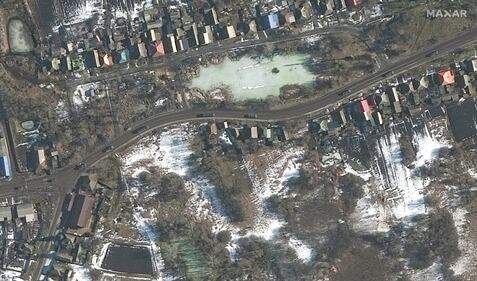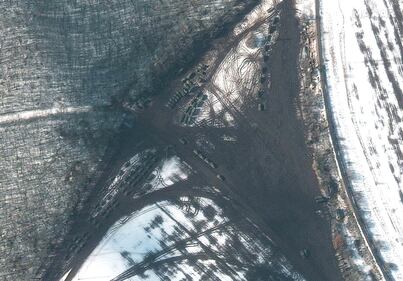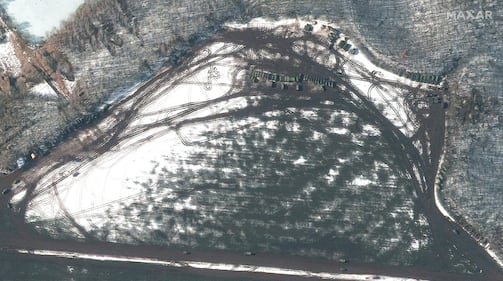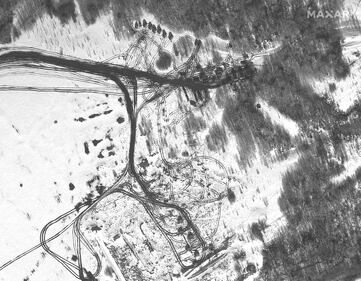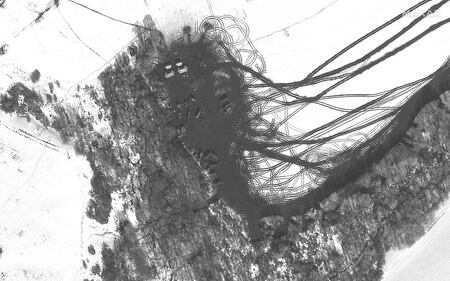In the next few days, there will be roughly 7,000 U.S. troops as well as aircraft mobilized in the Baltic states, Poland, Romania and other sites along the eastern edge of NATO as indications continue to mount that Russia intends to launch a full-scale invasion into Ukraine, the Pentagon says.
While American troops aren’t tasked with doing anything more than training with allies, the potential for Russia to inadvertently engage with NATO forces in the course of its invasion opens the possibility that U.S. forces could be obligated to defend partner countries.
President Vladimir Putin hasn’t given the order to invade, Defense Department spokesman John Kirby told reporters on Wednesday, “but you’re getting to a really good point, which is the potential ― if he decides to go in big in Ukraine, that puts Russian military forces right up against the eastern flank of NATO, his western flank.”
“And that’s an eastern flank, by the way, that we’re going to continue to reinforce and make more ready,” he added. “And so you do get into a potential there for miscalculation and miscommunication.”
Image 0 of 10
Kirby declined to speculate on which U.S. military leader would reach out to Russia in the event of further invasion to communicate any tactical movements on the ground that might affect forces on the other side of Ukraine’s border.
“We’re just not there yet, that we can speak to specific deconfliction mechanisms, and hopefully there won’t be a need for that,” he said.
The White House reiterated Wednesday that U.S. troop engagement in Ukraine is still off the table, regardless of whether Russia pushes its invasion to Kyiv and beyond.
“That is several steps down the road. but what I will tell you is the president has been crystal clear and consistent,” spokeswoman Jen Psaki told reporters. “He is not sending U.S. troops to fight in Ukraine. That has not changed.”
Roughly 80% of the more than 150,000 Russian troops amassed along the Ukrainian border are ready to attack, a senior defense official told reporters on Wednesday.
The capabilities on the ground include offensive missile systems and ground forces, as well as more than two dozen ships in the Black Sea, the majority of which are surface combatants, the official said.
RELATED
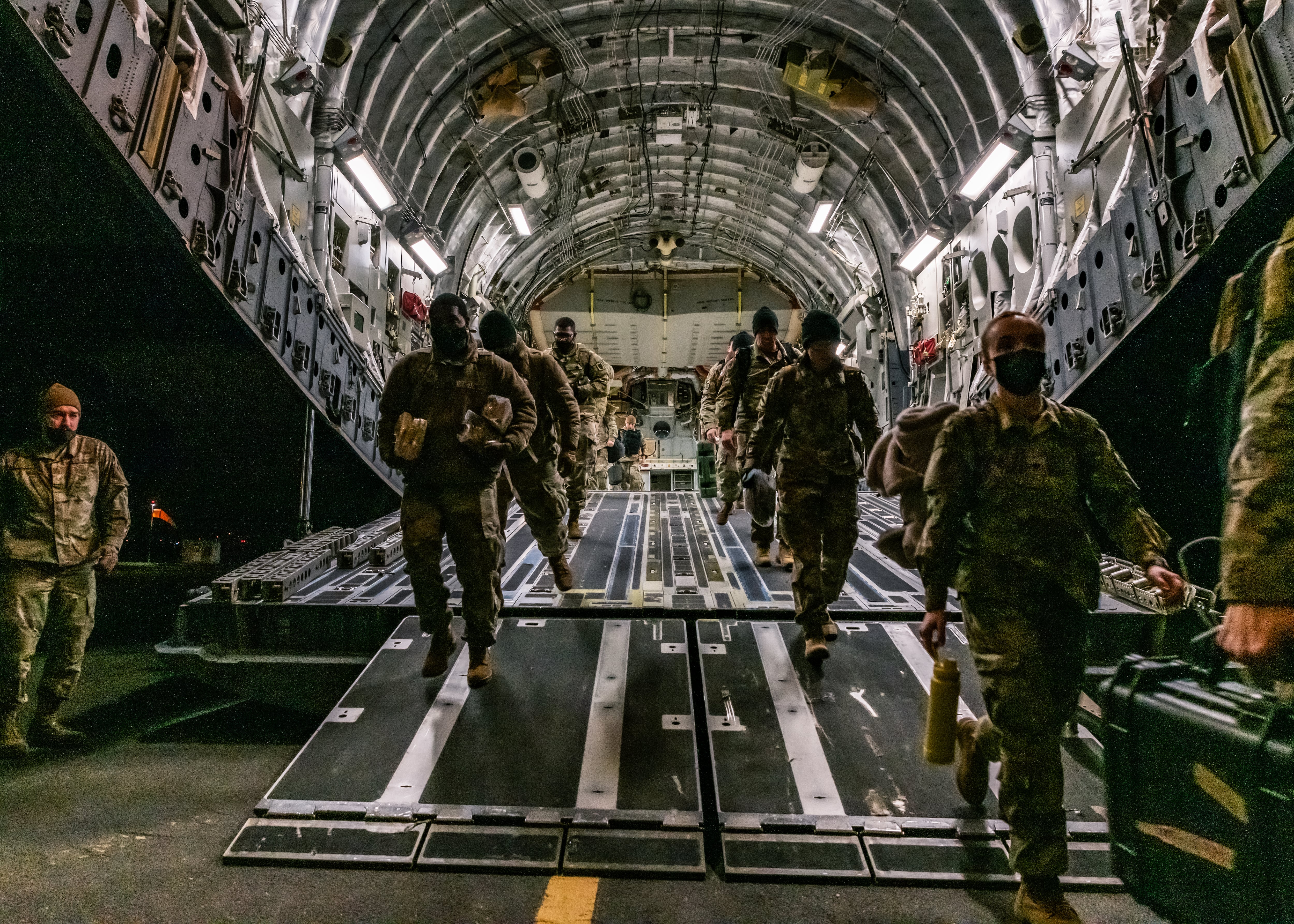
“He’s got ballistic missile capability arrayed. He’s got armor, artillery, certainly infantry. He’s got special forces,” he said. “And we assess today that he is near 100% of all the forces that we anticipated that he would move in.”
The Pentagon agrees with the White House’s assessment that an invasion has begun, the official said, but was unable to confirm whether, or how many, more Russian troops had crossed into previously unoccupied Ukrainian territory.
The U.S. is committed to sending more military equipment to Ukraine, the official said, but may have to reevaluate how it will be delivered, if Russia shuts down the country’s airspace.
“There are different ways you can you can help provide support and we’re exploring those ways, in case in case air transport is not possible,” the official said.
But there may have to be a change of plans in term of collecting intelligence with flights over Ukraine.
“We will continue to try to have as much visibility as we can for as long as we can,” he said. “The safety of our air crews is obviously going to be paramount, and [of] our assets as well, because not all assets are manned.”
“And if he goes in a big way and he’s able to own and manipulate the airspace, then obviously that’s going to change a lot of our calculus,” he added.
Soldiers from the 82nd Airborne Division in Poland, nearly 5,000 of them, are prepared to accommodate American refugees at “several locations in Poland,” the official said, though not right at the border.
“We have not seen any significant numbers of American citizens crossing,” he said. “Now that could change, we don’t know. Hopefully, they all took the advice of the State Department and the president and left Ukraine.”
They and other troops stationed along NATO’s front will spend their days on joint training with allies, the official said. For the aviation units, that will include the kind of proficiency sorties they would fly at their home stations.
“They’re there for reassurance and deterrence capabilities,” the official said. “I have no doubt they’ll be doing joint training with the host nations, and you know, flying training missions and staying in the air.”
Meghann Myers is the Pentagon bureau chief at Military Times. She covers operations, policy, personnel, leadership and other issues affecting service members.

